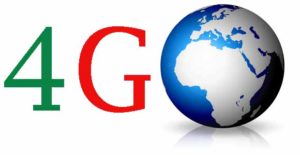
BT 4G spectrum
Some UK telecom history reminders
You may remember that BT demerged in 2001 from its debt burdened BT Cellnet/O2 subsidiary, which subsequently was purchased in 2005 by Telefonica: BT was then focusing on pure wireline communications.
However, customers were using more and more their mobile devices and were requesting convergent fixed and wireless services. A convergence offering had become necessary , and BT introduced a fixed-wireless service for consumers called Bluephone/Fusion. And 9 years ago BT signed for business customers a service agreement with Vodafone so that BT became Mobile Virtual Network Operator (MVNO), and could provide wireless services.
The 4G LTE mobile technology is now being rolled-out across Europe with a change of paradigm for the actors in the telecommunication field, as I tried to describe in an earlier post . And wireline only operators may appear weak in the competition if they cannot use this 4G technology in their offerings.
BT recent moves
Earlier this year, BT surprisingly purchased quite a lot of 4G spectrum in the UK, certainly more than necessary for its Wi-Fi needs, while it is not a mobile operator anymore. And BT announced recently the end of its Vodafone MVNO partnership and the opening of talks with other mobile operators. It seems that BT intends to propose the 4G spectrum it acquired in a transaction with a licensed mobile operator.
BT is a responsible company
BT is no fool. It is an old experienced large company with about 89,000 employees, and needs to prepare the next evolution of the telecommunication market brought by the introduction of 4G: true added value services accessible by any mean of communication (wireline and wireless) everywhere and at any time. The 4G finally allows true fixed-wireless convergence that has been promised many years ago by the introduction of the IP Multimedia Subsystem concept : but earlier the limitation in mobile throughput did not allow real applications to work satisfactorily both for business customers or normal consumers.
Customers: one world of services.
You already heard this before : you probably recall the promises of Vivendi group early 2000 for true fixed-wireless convergence with focus on contents. You may also remember that the technology was not up to the promises: do you recall WAP? How irritating it was to wait for any content to be displayed? We now possess the stable technology that can make the promise true, 10 years later.
Lessons for all the players.
What should the move of BT teach the other players on the market? One could reasonably argue that high speed ubiquitous access to the services need to be secured by service providers, thus meaning including 4G access : but those accesses should allow service providers to master their own added value – so any MVNO type arrangements should allow service providers to fully master their services (they need to be full MVNO- see my earlier post for explanation). That will mean true convergence fixed and mobile.
Next frontier
I therefore believe there will be a need for service providers to make sure they master both wireline and wireless high speed accesses- including full MVNO arrangements- in order to provide at last the convergent services the customers, especially business customers, are craving for. This indeed will enable the delivery of services anywhere at any time, with a clear limitation in Europe though : This ubiquity of service is currently limited to the national market of each individual European country : the next frontier, especially necessary for multinational business customers, would be to imagine the way to provide those convergent services at a continental level without alteration.
Copyright
The entire contents placed on the www.MVNO-Global.com site is the exclusive property of Georges-Harald Bernard. All rights of reproduction or representation of these are reserved.